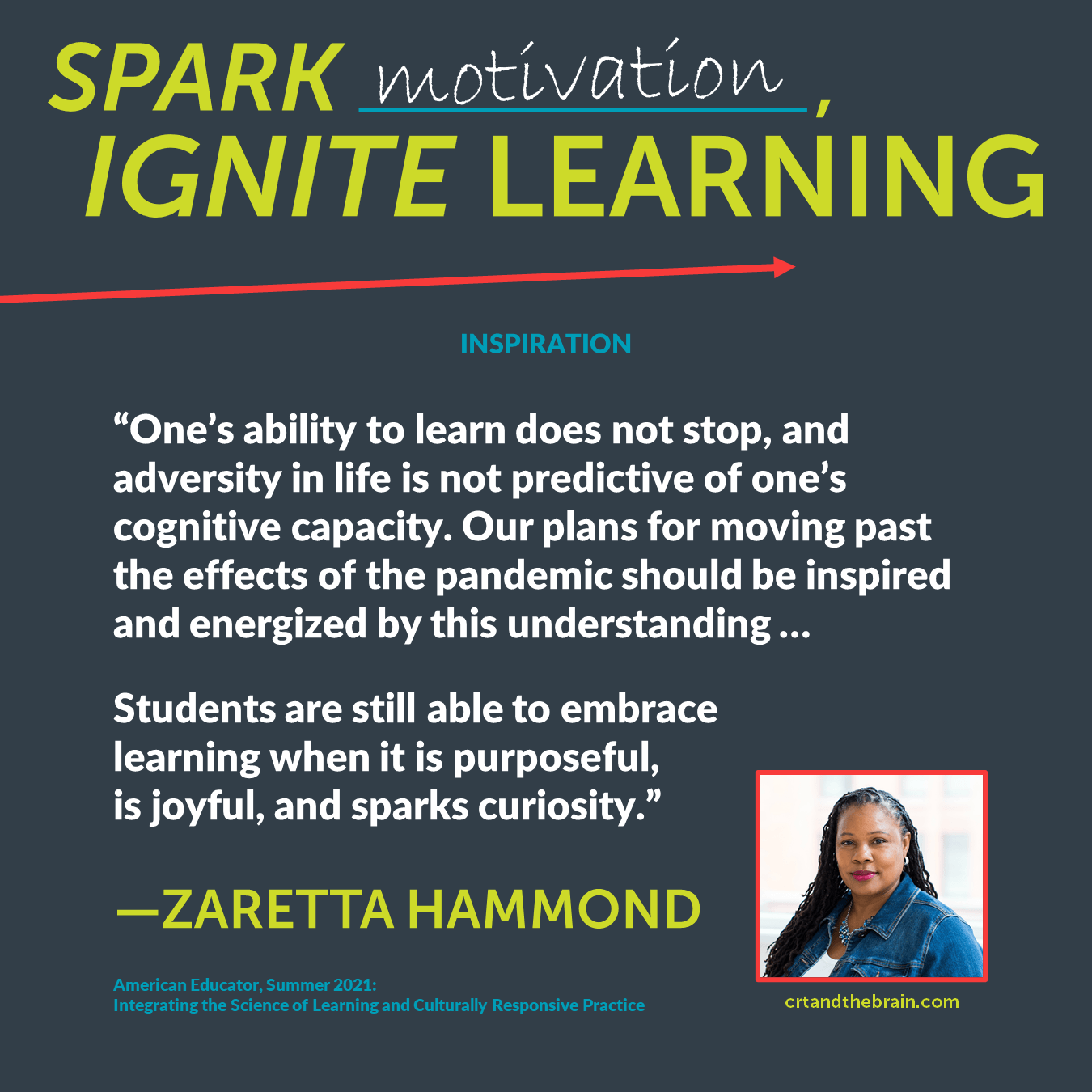

Photo: Allison Shelley for EDUimages
By creating learning experiences that are designed for discovery—that affirm and tap into each student’s identity and assets—we can navigate the unique challenges this school year will bring and take a step toward equity by helping all young people, especially those from communities that have been marginalized, not just recover but grow and achieve.
The start of this school year isn’t what anyone hoped it would be. Concerns about perceived learning loss and students’ and teachers’ physical safety in light of the Delta variant, as well as arguments over masking and teaching anti-racism, have clouded our excitement about returning to school. The well-being of all students and staff must be our foremost priority.
But disruption can also present opportunity: This year, let’s reimagine how we go back to the school environments and relationships we cherish. Instead of merely remediating deficits, we can ensure students’ re-entry into school is affirming and supportive, while stimulating their intellectual curiosity, by celebrating their identities and their individual growth despite the collective trauma and isolation so many have faced (and which has been disproportionately experienced in communities of Color).
Using an asset-based lens encourages educators to really get to know and learn all about their students rather than just focusing on trying to solve challenges. The science of learning and development demonstrates that an asset-based classroom environment makes students feel more comfortable taking academic risks and expanding their learning.

Stay Rooted in Relationships
It’s no secret that relationships are important. Attuned, responsive, positive developmental relationships—among teachers, students, school leaders, and community—can help position students to tackle rigorous academic content and should become the foundation for all we do in schools.
Research shows that strong relationships and supportive developmental experiences are what cultivate potential. A deep focus on building strong relationships, fostering a sense of belonging, and attending to social, emotional, and cognitive development is not in conflict with efforts to accelerate academic learning; these strategies are mutually dependent and reinforcing.
Designing all of our learning settings with relationships at the core could not be more important than it is today—for reducing stress for both children and adults, for addressing trauma, and especially for re-engaging young people and bolstering their belief in themselves and their futures.
Tools to stay rooted in relationships:
- Well-Being Index
- Student Relationship Structures tools
- Trust-Building Interactions tools
- Family, Caregiver and Community Partnerships tools
Elevate Student Voice: Create Classroom Culture Together
Students have the greatest stake in their education, but often too little say in their own school experience. We can invite students in as their whole, authentic selves- engaging their identities, agency, cultures, communities, skills, and their experiences, especially during the pandemic, as valued assets.
Student voice is critical. The science shows us that creating better conditions for learning and development must build from and leverage the assets and interests of young people as an inherent part of the educational experience.
This year, work together with students to co-create a supportive school and classroom environment that is physically, emotionally and identity safe, while creating a strong sense of authentic community and belonging.
By shifting the balance of power toward students, we affirm their identities and recognize them as active agents within the learning process.
Tools to elevate student voice:
- Expectations, Norms, and Routines tools
- Co-Regulatory and Restorative Practices tools
- Tiered Systems of Support tools
- Culturally Affirming and Sustaining Practices Tools
Instead of Focusing on What’s Been Missed, Build on What Students Bring
We have been pummeled with deficit-oriented messages about loss and gaps, but we know that learning never stopped for most students, even though school doors may have been closed. Students have mastered new technologies, taken on new challenges, and practiced managing stress and expressing their feelings as they navigate a tumultuous time. Instead of thinking about the past year as a loss of learning, we must build from these new skills and experiences.
Black, Latinx, Pacific Islander, Indigenous and students from other historically marginalized communities are subject to disproportionate levels of remediation. Rather than asking, “How will we ever remediate lost learning?” let’s ask “How can we build from what students bring and help them along their own unique developmental trajectory?“
Now is the time to focus on building students’ knowledge, skills, and mindsets. We have an unprecedented opportunity to not just remediate but redesign foundational elements of our education systems. Building from students’ assets will promote growth, helping students to become engaged, effective learners.
Tools to build on what students bring:
- Supporting Student Agency tools
- Intervention and Enrichment Structures tools
- Learning Experiences tools
- Tiered Systems of Support tools

Sign up for Turnaround’s mailing list to receive updates on how to ignite learning in your school or learning environment.

Share